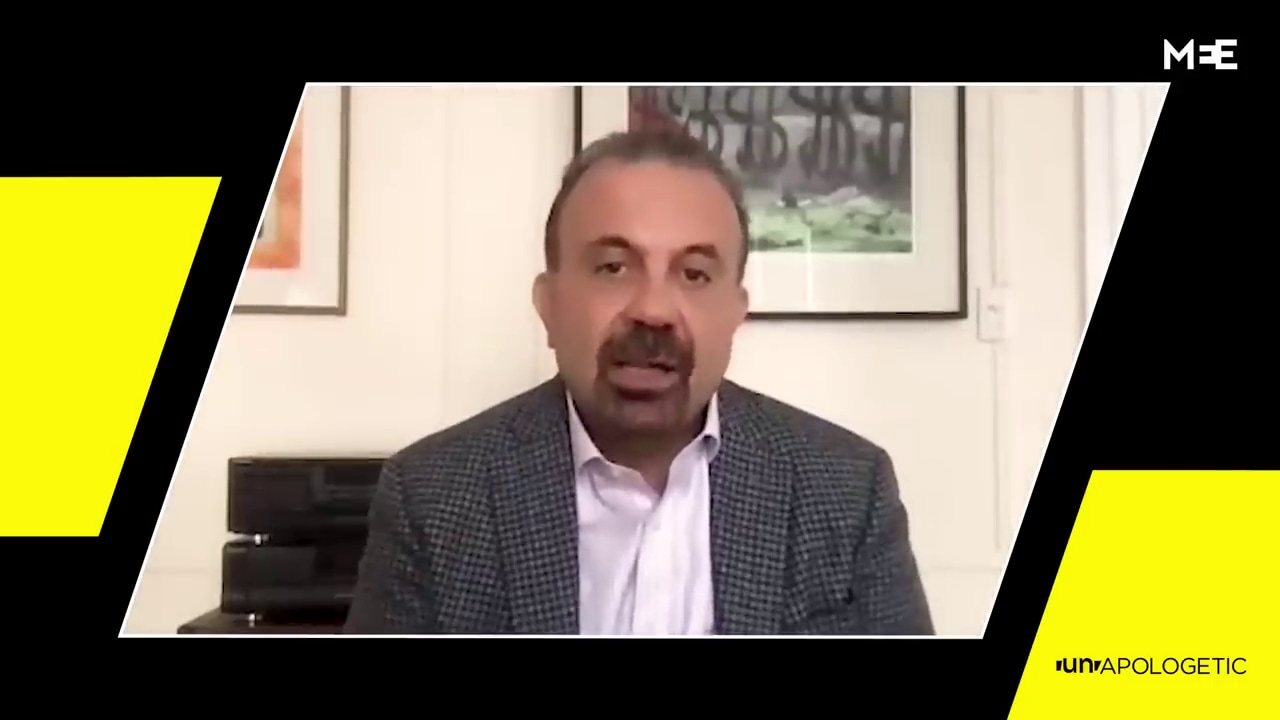
An in-depth documentary, titled "Studio of Horror," was broadcast by Al-Arabiya TV on February 9. It takes a close look at the media machinery of ISIS, interviewing personnel who worked in its media industry and discussing the filming methods and effects used in execution videos. According to one of those interviewed, "When you step into the ISIS media office, you feel as if you have entered a huge international production company," with a budget of 2-2.5 million dollars.
Narrator: "In order to understand how the ISIS media operates, we must go to the source and meet the people responsible for the production of these films. Their testimony has been verified, and we have proof of their involvement in this. Only a few people agreed to talk. Some of them feel remorse, but they are still full-fledged Jihadists."
Abu Mus'ab Al-Urduni: "My name is Abu Mus'ab Al-Urduni ('the Jordanian'). I joined the Islamic State of Iraq and the Levant four years ago.
[...]
"I was appointed as a commander of a (training) camp in Al-Raqqah. We established a special force and trained mujahideen from various countries: from France, Tunisia, Algeria, and Morocco, as well as from Syria. We would recruit the best graduates from among the Syrians and the foreigners to the special force. The fighters would acquire great expertise in heavy weapons, urban warfare, ambush tactics, and assassinations. Some were trained in order to be sent abroad, to carry out operations in Tunisia, Saudi Arabia, or France, for example.
[...]
"Here, the members of the special force grab their knives, in order to slaughter the members of the Nusayri regime. Most of the special force members are foreigners."
Narrator: "When ISIS took over Al-Raqqah in January 2014, Ziyad was just another Islamic activist. He was placed in prison for a month, and then his friends convinced him to join the media office of ISIS."
Ziyad: "I was present at one of the battles against the (Syrian) 17th Division.
[...]
"There were more than five cameramen there. The fighters were deployed, this way, and the cameramen advanced with them. In addition to the five or six professional cameramen, there were some 30 cameras attached to the fighters' heads. There were also cameras attached to the AK-47 rifles.
[...]
"When you step into the ISIS media office, you feel as if you have entered a huge international production company. It has recording studios, radio studios, and filming studios. In Al-Raqqah, we had the elite media staff of the Islamic State. I believe this was the first comprehensive media office of the Islamic State. There were approximately 120 cameras of all types there."
[...]
Narrator: "This man, who called himself Tareq, was one of those who built the ISIS media machine, when the organization first reached Syria, in early 2013. He was born in Aleppo, the second largest city in Syria, and worked with ISIS for a year - first as a cameraman and then as a technical engineer."
Tareq: "The media emir was an Iraqi. He only wanted to educate men. We helped to establish seven or eight media offices. The people in charge of the media offices were Iraqi, and there were also two Frenchmen. From the way they gave orders, it seemed that the top officials were put in charge of the media. They were members of Al-Baghdadi's inner circle. They were always with Al-Baghdadi. They took very tight security measures. The emirs would only communicate with us directly. As for money or anything we needed - we had carte blanche to get whatever we wanted. Any cameras or laptops that we wanted were brought in easily from Turkey. They were not subject to any inspection. When I was there, the monthly expenses of the media office did not exceed $100,000. Now, after the declaration of the Caliphate, the expenses have grown extensively. A friend in the media office told me that the expenses of the Al-Raqqah media office alone are estimated at $2-2.5 million."
[...]
Narrator: "On February 13, 2015, six months after the founding of the so-called 'Caliphate,' ISIS published a video titled 'Healing the Believers' Chests.'"
Muath Safi Youssef Al-Kasasbeh: "I am First Lieutenant Muath Safi Youssef Al-Kasasbeh..."
Narrator: "As in all the ISIS execution videos, the victim's confession was staged. The footage was high quality, using 3D programs to show digital flames. But the rest of the film shocked the world. In complete silence, the Jordanian pilot strolled in an Al-Raqqah neighborhood destroyed by aerial bombings, while soldiers of the special force looked on. These men were trained by Emir Abu Mus'ab Al-Urduni, who was present there on that day."
Abu Mus'ab Al-Urduni: "The media crew consisted of five men and four cameras. They told the fighters of the special force where to stand. The fighters wore masks and high-quality fatigues during the filming. They were filmed at the beginning, and when Al-Kasasbeh got there, his movements were also filmed. The Jordanian pilot did not know that he was about to be set on fire until the very last moment, when petrol was poured on him, and he was placed in that cage. Here you can see Abu Muhammad Al-Adnani. Al-Adnani participated in the burning of Al-Kasasbeh, in order to send a powerful message. Here ISIS wrote that he was the emir of one of the units, but in fact, he was the emir of the Islamic State in the Levant. It was Al-Adnani who would instruct the media crews when to produce films of slaughter, killing, burning, or drowning. This was the strategy of Al-Adnani and of the Islamic State: To send messages of terror and challenge to anyone trying to fight the Islamic State."













